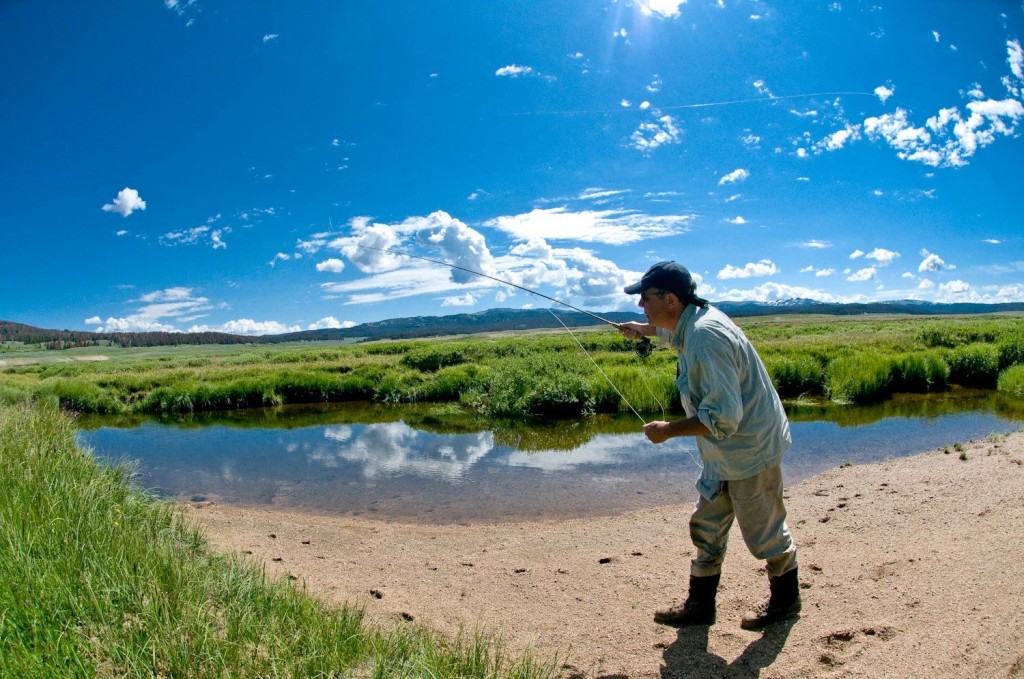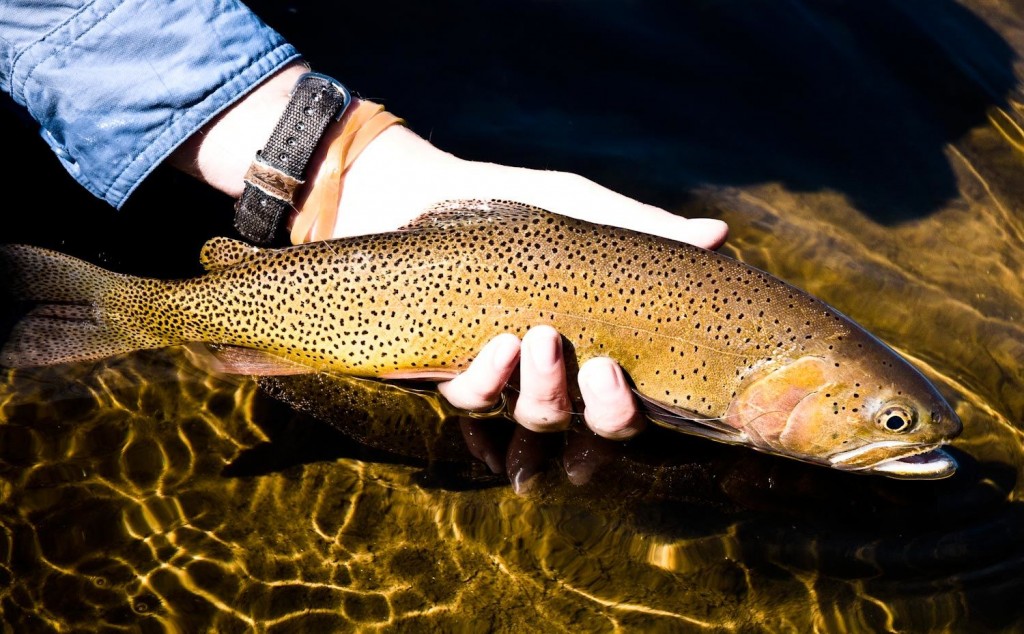
Brad Wayne makes sure to keep a safe buffer between him and a spooky cutthroat. Photos By: Louis Cahill
Most fly anglers would agree that success in fly fishing is often determined by how well they can stay out of sight from the astute fish their trying to catch.
If your finned adversaries are able to put a bead on you (identify you as a threat), there’s a good chance they’re going to ignore your flies or even worse, run for cover. Your ability to maintain a small signature on the fish’s radar should always be high on your objective list when you’re on the water fishing. Failing to do so, you’re going to be setting yourself up for defeat before you even make your first cast. So make a point to keep a sufficient buffer between you and the fish when you’re working water, and it usually will yield you higher catch rates.
There’s several variables anglers should look at and weigh-in to determine the size of the buffer they should maintain. Fast moving riffles (choppy water), freshly stocked fish, dingy water, overcast skies or fish positioned deep in the water column, are all variables that generally shrink the size of the buffer needed by anglers. Trout in these conditions usually feel relatively comfortable and safe, and therefore you can get away with moving in order to make precise presentations. On the other hand, if you’re dealing with flat water (slow moving or calm water), crystal clear water, wild educated fish or fish holding closer to the surface, anglers should keep as large of a buffer as they can, without losing their ability to execute a good presentation and drift.
It’s important to note that I think presentation trumps the importance of a buffer altogether though. If you can’t get a good cast and presentation because you’re positioned too far away from the fish and or target zone, that will seriously decrease your ability in getting fish to eat your flies. Skill level and experience gained over time will eventually get you where you can quickly analyze the conditions on the water, and determine the correct buffer you should preserve. That way, you’ll keep off the fish radar and you’ll be able to consistently make good presentations.
Over the years guiding, I’ve noticed that quite a few fly fisherman suffer from a chronic, shuffle foot syndrome. They start out positioned correctly with a nice buffer, but as they make repetitive presentations, they start shuffling their feet, moving closer and closer to the fish. Most anglers that fall into this category don’t even realize their doing it. Before they know it, they’re standing right on top of the fish, and the fish are staring at them saying, “Does this angler really think I’m not aware of what’s going on here”. It makes absolutely zero sense for anglers to go out of their way to make a stealthy approach, if when they get there, they’re going to end up wading right out on top of the fish to make a cast. Stay out of the water if you can get a good presentation to a feeding fish. Use natural buffers like bushes and boulders to mask your presence when they’re available. If you’re going to have to wade out further so you can eventually work that far bank, make sure you at least work the water close to you first.
This post was primarily intended for trout fishing but buffers often play just as big of a role in success when fly fishing for other species in both freshwater and saltwater.
Keep it Reel,
Kent Klewein Gink & Gasoline www.ginkandgasoline.com hookups@ginkandgasoline.com Sign Up For Our Weekly Newsletter!
Sign Up For Our Weekly Newsletter!


Nicely described in a real brief post, Kent. Great job.